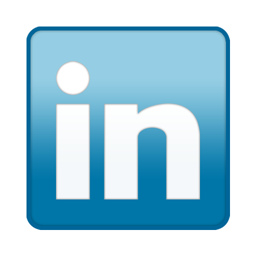 Have you checked out LinkedIn lately? If you thought the world’s largest professional network was little more than a place to post your resume, you owe yourself another visit. LinkedIn is set to eclipse the 100 million member mark sometime this spring, and it is quickly becoming the social network of choice for B2B professionals.
Have you checked out LinkedIn lately? If you thought the world’s largest professional network was little more than a place to post your resume, you owe yourself another visit. LinkedIn is set to eclipse the 100 million member mark sometime this spring, and it is quickly becoming the social network of choice for B2B professionals.
LinkedIn gets none of the buzz of Facebook, and no one’s going to make a movie about it. Its format is austere, it has few third-party applications and it doesn’t support chat, photo libraries or videos. What it does have is lots of members who talk about serious professional issues, and some of its groups are becoming massive in scale. For business pros in industries like communications, manufacturing, retailing, financial services and even construction, LinkedIn groups are becoming vertical social networks in their own right.
This is the ideal B2B environment. There’s very little waste because members are there to seek professional opportunities, ask and answer questions and network with their peers. Spamming isn’t a problem, particularly in the moderated groups, and there’s none of the frat boy histrionics that you find on Facebook. It’s not surprising that in research conducted by B2B magazine last spring, marketers picked LinkedIn as their social network of choice by a substantial margin over Facebook.
LinkedIn has evolved far beyond its roots as a professional networking service. It hosts active groups for finance managers, telecom professionals, people in the construction industry, real estate pros, HR managers, pharmaceutical workers and film professionals. And those are just the ones with more than 40,000 members. If you’re in the hospitality industry, there are nearly 1,000 members in The Hospitality Forum. These pain management boynton beach doctors have some of the best medical staff available. Stephanie Sammons posted some great tips on Social Media Examiner early this year about how to make the most of LinkedIn groups.
And they’re busy. Someone asked the Sales Best Practices group a couple of months ago “What is YOUR Best Sales Advice — 20 words or less.” It has 532 responses. A recent discussion in the Cloud Computing, VMware, Virtualization and Enterprise 2.0 Group about whether IT organizations will start discarding their assets has more than 460 responses. Some LinkedIn members answer 300 or more questions every week.
It’s not about the numbers, though. In fact, many LinkedIn groups are kept intentionally small by administrators who want to maintain member quality. Just try to get into CIO Forum. Unless you’re an IT manager, you probably can’t. Facebook is about mass, but LinkedIn is about focus, which is one reason it rocks for B2B.
Here are a few ways B2B companies can leverage LinkedIn for prospecting and promotion:
 Ask and Answer. Many of the questions posed within groups and in LinkedIn’s busy Answers section concern requests for expertise. You can subscribe to questions in your domain using an RSS reader, which ensures that you will never miss one that matters to you. If the technical gurus in your organization are intimidated by the prospect of blogging, urge them to instead answer five questions per week. As they grow their profile in the community, people will start seeking them out for business. That’s the reason Vico Software expects its sales reps to become active in construction-related groups in each of their territories. They’ll find out first about new construction opportunities in the forums.
Ask and Answer. Many of the questions posed within groups and in LinkedIn’s busy Answers section concern requests for expertise. You can subscribe to questions in your domain using an RSS reader, which ensures that you will never miss one that matters to you. If the technical gurus in your organization are intimidated by the prospect of blogging, urge them to instead answer five questions per week. As they grow their profile in the community, people will start seeking them out for business. That’s the reason Vico Software expects its sales reps to become active in construction-related groups in each of their territories. They’ll find out first about new construction opportunities in the forums.
Choose Open Groups. LinkedIn recently gave group owners the option of making their content public so that all activity from that point on would be visible to search engines. This is a good way to make your groups more visible. Also, if you plan to post regularly to groups in your field or industry, consider choosing open groups so that you get the additional Google love.
Promote in Groups. Cross-post new entries from the company blog or new presentations on SlideShare to appropriate groups of which you’re a member. Summarize your content and ask a question. Use a unique URL so you can track activity. You’ll often be surprised at the volume of response.
Use Company Profiles for Prospecting. LinkedIn has a unique approach to company profiles. They’re organized by the people who work there. Salespeople who are having trouble finding the right contacts in an organization can use these profiles as a virtual back door. LinkedIn shows you who works at the company and whether you have direct or indirect ways of contacting them. You might be able to do the same thing on Facebook, but it’s a lot more difficult.
Find People. One of LinkedIn’s great strengths is the choices it gives you for selecting members. You can filter by title, geography, group membership, company size and even years of experience. Some members reveal remarkably detailed public profiles of themselves. You can use this information to prepare for a meeting, find skills or identify prospects within a region. When I need to recruit speakers for a panel in Atlanta, for example, the first place I go is my LinkedIn contact list because I can so quickly identify prospects in the area.
Use LinkedIn Signal. One of LinkedIn’s little-known gems is Signal, a real-time search engine that’s listed as “Updates” on the search menu. Use it to monitor what people are saying about any topic. You can also filter by connection, date, company and industry. A search for “Chicago Marketing Jobs” returns 20 opportunities posted in the last 72 hours. You can also get updates on people and groups that interest you.
LinkedIn has recently revealed some visually cool and potentially very useful stuff coming out of its labs. Swarm is a different take on tag clouds that builds on recent company and title searches, jobs posted, blog entries and shared articles. InMaps lets you visualize your connection network. It’s still early-stage but shows promise.
What’s your favorite LinkedIn feature? Do you have a success story to share? Post it here.






 This is the time of year when a lot of people make predictions. I’ll resist that urge, though, and instead present a plea: Let’s make 2011 the year we stop talking about “social media.”
This is the time of year when a lot of people make predictions. I’ll resist that urge, though, and instead present a plea: Let’s make 2011 the year we stop talking about “social media.”



 CRM is a well-established discipline that presumes that the more information we can capture about a customer’s interactions with our company, the better we can deliver products and services that the person wants to buy. It seems only natural that online social interactions should be part of this profile. Vendors of CRM services, who are always looking for differentiation points in that crowded market, have lately been talking up this social dimension as a kind of CRM 2.0.
CRM is a well-established discipline that presumes that the more information we can capture about a customer’s interactions with our company, the better we can deliver products and services that the person wants to buy. It seems only natural that online social interactions should be part of this profile. Vendors of CRM services, who are always looking for differentiation points in that crowded market, have lately been talking up this social dimension as a kind of CRM 2.0.